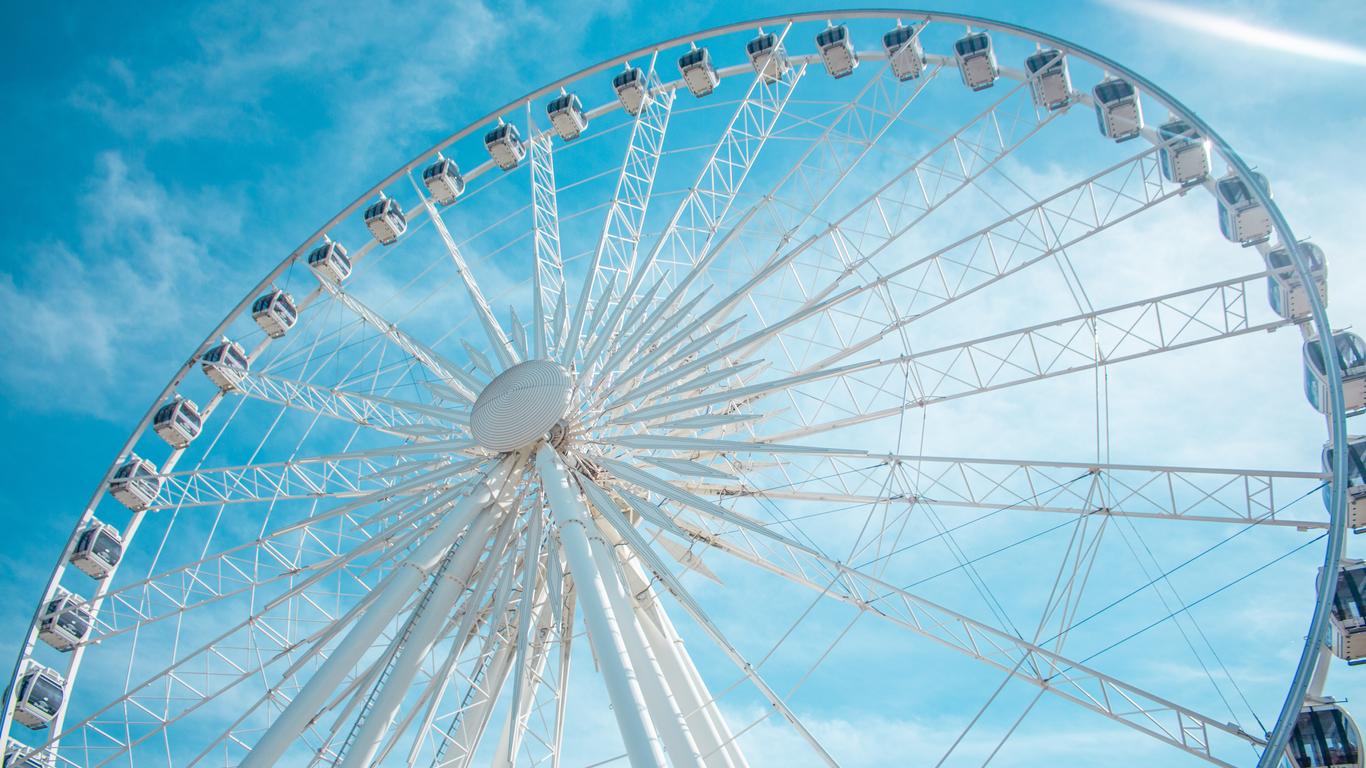For many Niagara Falls tourists, Clifton Hill offers just as much fun as the thundering falls themselves, with an entire mini-village of novelty shops, magic shows, museums, rides and more than 300 interactive games for all ages. It’s not just for the kiddies either, as adults have access to blackjack casinos, wine bars and nightclubs cranking out live music and entertainment well into the evening. Clifton Hill hotels, eateries and shops make it possible to ditch the car and explore the area on foot.
There is seemingly no end to the attractions at Clifton Hill, with an indoor waterpark, a wax museum, miniature golf course with life-sized dinosaurs, and outdoor amusement park reeling with Ferris wheels and haunted houses. The Niagara Skywheel towers 22 metres above the Falls for aerial views otherwise seen only from a helicopter. The Strike At Night entertainment complex features cosmic bowling with a million-dollar light and music centre, billiard tables, a bar and live DJ music.
Clifton Hill is an actual street running between River Road on the Niagara Parkway and Victoria Avenue, which is where fashionistas head for their shopping fixes. The Rainbow Bridge connects Niagara Falls on the American side to the falls on the Canadian side, with a direct filter from the bridge to River Road. A giant parking lot at Clifton Hill ensures walking access to the village, the Falls and Queen Victoria Park for viewing the nightly fireworks shows, while the Falls Shuttle, WEGO buses and private hop-on-hop-off shuttles offer convenient transportation to nearby attractions.
The history of Clifton Hill dates to 1782, established by Captain Ogden Creighton, a British Army officer who named the area after a town in England. It became a tourist attraction linked to Niagara Falls in 1812. The original Clifton Hill street was known as Ferry Road because of its location near the rowboats ferrying people between the United States and Canada over the Niagara River.





